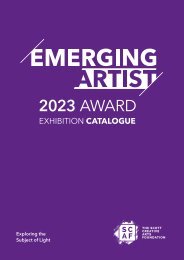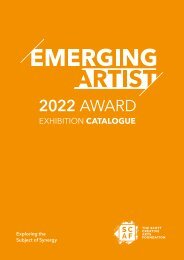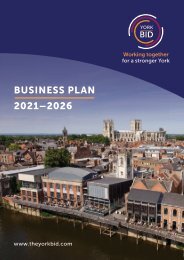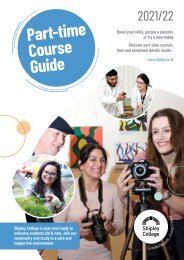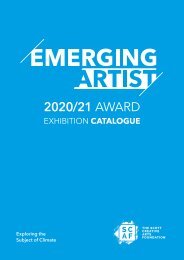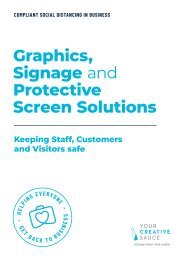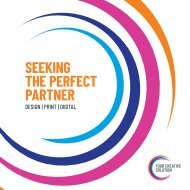Your Creative Solution - Print Audit Principles
Our print audit establishes a thorough understanding of methods used in the process of purchasing and managing print throughout your business.
Our print audit establishes a thorough understanding of methods used in the process of purchasing and managing print throughout your business.
You also want an ePaper? Increase the reach of your titles
YUMPU automatically turns print PDFs into web optimized ePapers that Google loves.
BRAND AWARENESS<br />
When many individuals within a business are responsible for buying print, there is the<br />
chance that they are not fully aware of their own brand. For example, whilst marketing<br />
teams will be brand aware, other departments may not be and may not know the print<br />
they are purchasing does not conform to the brand identity.<br />
During our audit, samples from a wide range of print products will be obtained, and<br />
each will be assessed for brand compliance. This will include the use of logos, fonts and<br />
colours. Any variance from the corporate standard will be reported along with suitable<br />
recommendations for more effective control.<br />
ENVIRONMENTAL CONSIDERATIONS<br />
During our audit we will establish to what extent environmentally friendly processes<br />
and materials are being utilised throughout the supply chain. Whilst this may or may<br />
not be an important consideration for the client we will look to offer suggestions that<br />
will lessen the impact on the environment.<br />
AUDIT METHODOLOGY<br />
The mechanisms used to collect the audit information are:<br />
∙<br />
∙<br />
∙<br />
∙<br />
Data collection<br />
Purchasing analysis<br />
Process analysis<br />
Resource analysis<br />
DATA COLLECTION<br />
In order to make a meaningful analysis, the audit needs to collect information about<br />
products representing 70% - 80% of the total spend. This is not normally as difficult<br />
as it may appear as this can usually be obtained from 20% of the items. Samples of<br />
each item will be obtained and a questionnaire for each completed. The key questions<br />
relating to each item are:<br />
Annual consumption versus normal order quantity - used to determine purchasing<br />
patterns and establish whether or not best value is being obtained.<br />
Expenditure on product - to provide an accurate assessment of current spend and<br />
show the extent to which cost can be reduced.<br />
Current supplier - to evaluate the extent and nature of the supplier base.<br />
Whether or not the product is business critical - used in the analysis of risk mitigation.<br />
The purpose of the item - used to understand the function of the item.<br />
How the item is created/amended - used to understand the artwork/<br />
origination process.<br />
Whether or not the product could be improved in anyway – to establish whether the<br />
product is fit for purpose and facilitate process improvement.<br />
Part of the data collection is normally facilitated through individual meetings with the<br />
end user. This provides a vital opportunity to understand how the products are used<br />
in the business process and enables us to consider solutions that will benefit both the<br />
user and your business as a whole.




